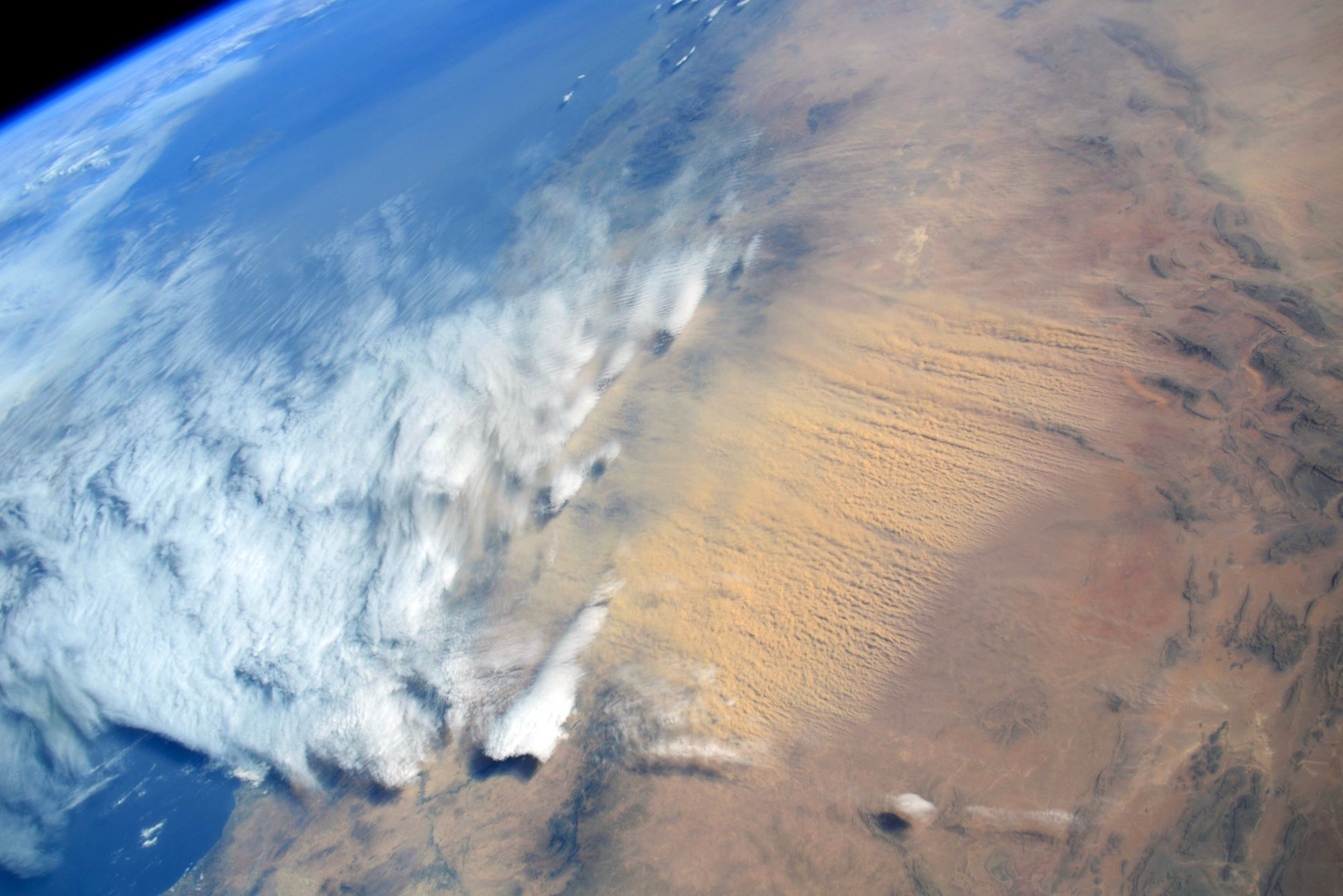[:ja]セルゲイ・クド-スべルチコフ宇宙飛行士がISSから撮影したモロッコとアルジェリアの国境付近の砂嵐です。

大気中に巻き上げられる砂の量はサハラ砂漠が最大で、また、海洋に堆積する砂の半分以上はこの北アフリカのサハラ砂漠によるとされています。砂嵐は土壌を剥ぎ取る、農地の生産性を下げる、車両や航空機の視界を遮るなどのマイナスの効果がありますが、驚くことに、プラスの効果もあります。熱帯雨林には鉄分などが乏しいのですが、サハラの砂粒には植物の成長に不可欠なリンが豊富に含まれており、大西洋や南北アメリカに養分を供給しているとされています。洪水や自然風化などで傷んだアマゾン地域の土壌に養分を供給している、つまり、生物の宝庫であるアマゾンの熱帯雨林の成長が少なからずアフリカ大陸の砂によって育まれている可能性もあると指摘されています。
地上の様子はこちらです。

参考文献: Sergey Kud-Sverchkov’s Tweet 1, Sergey Kud-Sverchkov’s Tweet 2
地球俯瞰画像を見る: LiVEARTH
[Earthview Wonders] No.1481: Sahara Sand Storm🇲🇦🇩🇿
Astronaut Sergey Kud-Sverchkov captured from ISS the dust storm near the border of Morocco and Algeria.

It is considered more than half of the dust deposited in the ocean lifts off from the Sahara Desert region. According to NASA, the Saharan dusts contain rock minerals such as phosphorous, an essential nutrient for plant proteins and growth, and is thought to provide nutrients for the Atlantic Ocean and distant Americas. Dust storms cause soil loss from the dry lands, reduced agricultural productivity, damage of young crop plants by abrasive effect, and reduced visibility affecting aircraft and road transportation. Surprisingly, dust can also have beneficial effects where it deposits: Central and South American rain forests get most of their mineral nutrients from the Sahara; iron-poor ocean regions get iron; and dust in Hawaii increases plantain growth.
The local scenery on the ground is as follows.

Reference: Sergey Kud-Sverchkov’s Tweet 1, Sergey Kud-Sverchkov’s Tweet 2
See earthview photo gallery: LiVEARTH[:]